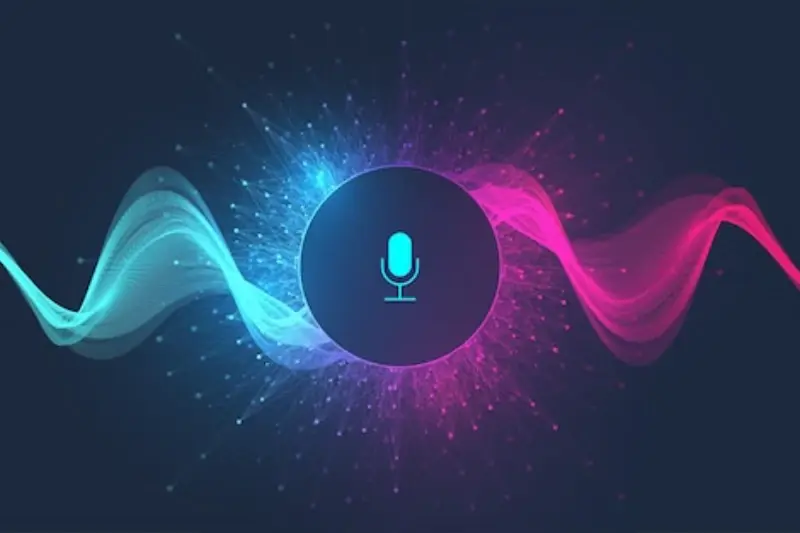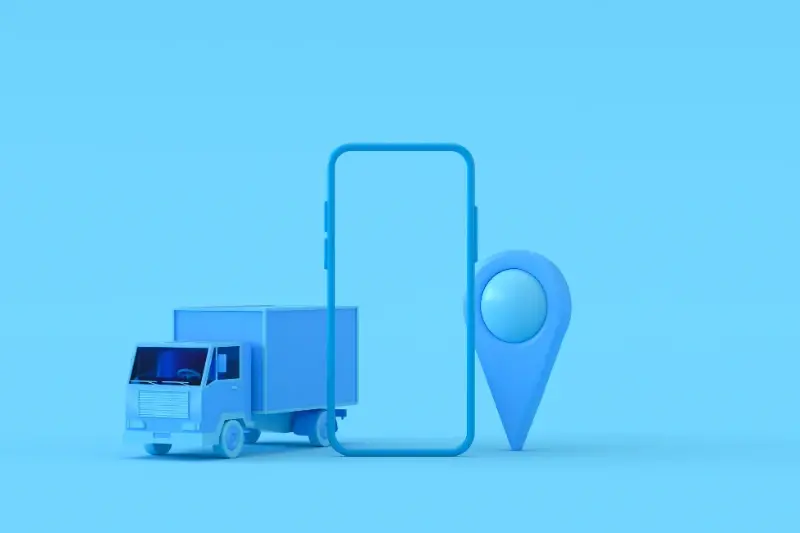How EdTech Apps Are Revolutionising Classroom Learning in 2025
Have you ever wondered why some students seem to switch off the moment they walk into a classroom? I've spent years working with EdTech companies, and this question keeps coming up in every conversation I have about classroom learning. The traditional setup—rows of desks, textbooks, and one teacher trying to reach thirty different minds—just isn't working for everyone anymore.
What's happening now is pretty remarkable though. EdTech apps are changing how students learn, how teachers teach, and how classrooms function. We're not talking about replacing good old-fashioned teaching here; we're talking about making it better, more engaging, and more effective for each individual student.
The shift from passive learning to interactive engagement is transforming how students connect with educational content and how teachers can measure real understanding.
The numbers tell an interesting story too. Schools using educational apps report higher student engagement rates, better learning outcomes, and teachers who feel more confident about reaching every student in their class. But here's what I find most interesting—it's not just about the technology itself. It's about how these tools are being used to solve real problems that have existed in education for decades. Problems like keeping students engaged, providing personalised learning experiences, and giving teachers the insights they need to help each student succeed. The classroom of today looks very different from the one you might remember, and that's largely thanks to how EdTech is being woven into everyday learning.
What EdTech Apps Actually Do In Modern Classrooms
Walk into any classroom today and you'll see something quite different from what we remember from our school days. Students aren't just sitting in rows copying from the blackboard—they're tapping, swiping, and interacting with digital content in ways that would have seemed like science fiction not too long ago.
EdTech apps have quietly become the bridge between traditional teaching methods and modern learning needs. They're not replacing teachers (let's be clear about that), but they are giving educators tools that make lessons more interactive and accessible for every type of learner.
Core Functions of Educational Apps
The most effective educational apps in classrooms today serve several key purposes. They deliver content in bite-sized, digestible formats that keep students focused; they provide instant feedback so learners know immediately if they're on the right track; and they adapt to different learning speeds, which means no child gets left behind whilst others aren't held back.
- Interactive lessons that respond to student input
- Progress tracking for both students and teachers
- Multi-media content including videos, animations, and audio
- Collaborative tools for group projects and peer learning
- Assessment tools that provide immediate results
Real Classroom Integration
What's interesting is how seamlessly these apps fit into existing classroom routines. A maths lesson might start with a quick diagnostic quiz on tablets, move to group problem-solving using collaborative apps, and finish with students submitting their work digitally. The integration of classroom technology supports the learning rather than dominating it—and that balance is what makes modern EdTech so effective in real educational settings.
How Interactive Learning Changes Student Engagement
Think about sitting in a classroom listening to someone talk for an hour. Pretty boring, right? That's exactly how many students feel when they're stuck listening to traditional lessons without getting involved. Interactive learning through EdTech apps completely flips this on its head by letting students actually participate in their education rather than just absorbing information passively.
When students can tap, swipe, drag, and click their way through lessons, something magical happens—they start paying attention. These apps turn abstract concepts into visual experiences; maths problems become puzzles to solve, history lessons transform into virtual time travel adventures, and science experiments can be conducted safely on screen. The difference is night and day compared to textbook learning.
Why Students Stay Focused Longer
Interactive elements keep young minds busy in the best possible way. Instead of daydreaming about lunch, students are actively making choices, solving problems, and seeing immediate results from their actions. When they get something right, they get instant feedback—when they make mistakes, the app guides them towards the correct answer without embarrassment.
The beauty of interactive learning is that it works with how children's brains are wired. Kids naturally learn through play and exploration, which is exactly what these educational apps provide. They're not sitting still for ages; they're engaged, curious, and genuinely interested in what comes next.
Students retain information up to 75% better when they interact with content rather than just reading or listening to it—make sure your EdTech solution includes plenty of hands-on activities.
Why Personalised Education Works Better Than One-Size-Fits-All
Think about it—no two students learn the same way. Some need to see pictures to understand maths problems, whilst others prefer hearing explanations out loud. Traditional teaching methods often treat everyone the same, but mobile learning apps are transforming education by adapting to individual learning styles completely.
These smart apps watch how each student learns and adapt accordingly. If a child struggles with fractions, the app might offer extra practice problems or explain the concept using different methods. If another student races through multiplication tables, the app automatically moves them onto more challenging work. It's like having a personal tutor that never gets tired or frustrated.
How Apps Track Learning Patterns
Modern educational apps collect data about how students interact with lessons—not in a creepy way, but to help them learn better. They notice which topics take longer to master, what types of questions cause confusion, and when students perform best during the day.
- Time spent on each question or activity
- Which learning methods work best for each student
- Common mistakes and misconceptions
- Preferred difficulty levels and pacing
- Most effective times for learning different subjects
The Results Speak for Themselves
Schools using personalised EdTech apps report significant improvements in student performance. Children who previously struggled in traditional classroom settings often flourish when lessons adapt to their individual needs. The apps don't just change the difficulty level—they completely reshape how content gets presented.
What's particularly exciting is how these apps identify learning gaps that teachers might miss in busy classrooms. They can spot patterns across thousands of students and suggest teaching approaches that work best for different learning styles. This isn't about replacing teachers; it's about giving them superpowers to help every child succeed.
The Rise of Gamification In Educational Apps
Remember when learning meant sitting quietly at your desk, listening to the teacher talk for hours? Well, EdTech has completely changed that picture. These days, educational apps are turning lessons into games—and it's working better than anyone expected.
Gamification isn't just about adding points and badges to make things look fun. It's about using game mechanics effectively to help students learn better. When children complete a maths problem and earn stars, or unlock new levels by mastering spelling words, something interesting happens in their brains. They start wanting to learn more.
How Games Make Learning Stick
The best educational apps don't just slap game elements on top of boring content. They rebuild the entire learning experience around game mechanics. Students might battle monsters by solving equations, or build virtual cities by understanding science concepts. Each challenge gets progressively harder—just like in video games—keeping learners engaged without overwhelming them.
When students don't even realise they're learning because they're having too much fun, that's when you know gamification is working properly
Beyond Points and Badges
Smart classroom learning apps use competition carefully. Some students thrive on leaderboards whilst others prefer personal progress tracking. The most effective EdTech solutions let teachers adjust these game elements based on what motivates each student. This personalised approach means shy learners aren't discouraged by public rankings, and competitive students still get their challenges.
What's particularly clever is how these apps handle failure. In traditional classroom learning, getting an answer wrong felt like defeat. But gamified educational apps treat mistakes as part of the learning process—you simply try again until you succeed.
Real-Time Assessment and Feedback Systems
Teachers used to wait weeks to mark tests and return them to students. By then, the moment had passed and half the class had forgotten what they'd even written. EdTech apps have completely changed this process—now students get feedback instantly, while the learning is still fresh in their minds.
Real-time assessment works by giving students immediate responses to their answers. Get a maths question wrong? The app explains why straight away. Nail a science quiz? You'll see your score and move on to harder questions without waiting. This instant feedback loop keeps students engaged and helps them learn from mistakes before bad habits form.
How Real-Time Feedback Works
These systems use smart algorithms to analyse student responses and provide personalised feedback. When a student struggles with fractions, the app might offer extra practice problems or suggest a different explanation method. The technology tracks progress continuously, building a detailed picture of each student's strengths and areas that need work.
Teachers benefit too—they can see exactly where their class is struggling without waiting for test results. If fifteen students get the same type of question wrong, the teacher knows to revisit that topic tomorrow.
Types of Real-Time Assessment
- Quick quiz questions that adapt based on previous answers
- Interactive simulations that respond to student choices
- Voice recognition for language learning pronunciation
- Drawing tools that check mathematical workings step by step
- Collaborative exercises where students receive peer feedback
The best part? Students actually enjoy getting feedback when it's immediate and helpful rather than judgmental. They can fix mistakes on the spot and feel more confident about their learning progress.
How Teachers Are Adapting To Digital Teaching Tools
Teachers today face something completely different from what they experienced just a few years ago. The classroom has become a mix of traditional teaching methods and digital tools that can sometimes feel overwhelming. I've worked with enough educators to know that this shift isn't always smooth—there's a learning curve that many didn't expect when they first entered the profession.
The most successful teachers I've encountered don't try to replace everything they've always done; instead, they blend their existing skills with new EdTech capabilities. They're using tablet apps for interactive lessons whilst still maintaining face-to-face discussions. They're setting up digital whiteboards but keeping their physical classroom displays. It's about finding balance rather than complete transformation.
Common Challenges Teachers Face
Let's be honest—not every teacher feels comfortable with technology straight away. The biggest hurdles usually include:
- Learning multiple new platforms and apps simultaneously
- Managing different skill levels among students using the same tools
- Troubleshooting technical issues during lessons
- Balancing screen time with traditional learning activities
- Finding reliable internet connections for all devices
Start with one new digital tool at a time. Master it completely before adding another—this prevents overwhelm and helps build confidence with EdTech integration.
What's Working Well
Teachers who've successfully adapted often share similar strategies. They involve students in the learning process, turning tech-savvy pupils into classroom helpers. They create backup plans for when technology fails. Most importantly, they remember that EdTech apps are tools to support learning, not replace good teaching—the human connection remains the most important part of education.
The Future of Classroom Technology Integration
Looking ahead, classroom technology isn't going to slow down—it's going to get smarter. We're already seeing artificial intelligence making its way into educational apps, helping teachers spot learning gaps before they become real problems. The AI can analyse how students interact with content and suggest different approaches when someone's struggling with maths or reading comprehension.
Virtual and augmented reality are becoming more affordable too, which means more schools can afford to take their students on virtual field trips to ancient Rome or let them explore the inside of a human heart in 3D. These technologies aren't just fancy gimmicks anymore; they're becoming practical teaching tools that make abstract concepts much easier to understand.
Seamless Integration Across All Devices
The biggest change we're seeing is how different technologies work together. Students can start an assignment on their tablet, continue working on it at home on their laptop, and present it using the interactive whiteboard—all without losing their progress or having to start over.
Cloud-based systems mean that homework, feedback, and resources are available anywhere with an internet connection. This flexibility has become particularly important as schools recognise that learning doesn't stop when the bell rings.
Preparing Students for Tomorrow's Jobs
Schools are also using technology to teach skills that students will actually need in their future careers. Coding isn't just for computer science classes anymore—it's being integrated into art, music, and even PE lessons. Students learn to think logically and solve problems step by step, skills they'll use no matter what job they end up doing.
The classroom of the future won't replace teachers with robots, but it will give teachers much better tools to help every student succeed. Mobile app development in education continues to create new possibilities for enhancing learning experiences and improving educational outcomes.
Conclusion
After spending years working with educational apps, I can honestly say we're witnessing something special happening in our classrooms right now. EdTech isn't just making learning more fun—it's completely changing how students think, how teachers teach, and how schools operate. The shift from traditional methods to interactive, personalised learning experiences is creating opportunities we couldn't have imagined a decade ago.
What strikes me most is how these classroom learning tools are finally putting students at the centre of their own education. Instead of everyone moving at the same pace, apps can adapt to individual needs; some children race ahead whilst others take their time to master concepts. This personalised approach, combined with gamification and real-time feedback, means students are more engaged than ever before—and the results speak for themselves.
Teachers are adapting brilliantly too, which shouldn't surprise anyone really. They're using these digital tools to save time on marking, track progress more accurately, and focus on what they do best: inspiring young minds. The integration of technology isn't replacing good teaching—it's amplifying it.
Looking ahead, these education trends will only accelerate. Schools that embrace EdTech now are setting their students up for success in an increasingly digital world. The apps we're building today aren't just educational tools; they're preparing children for futures we can't fully predict yet. And honestly? That's pretty exciting. The transformation happening in classrooms today will shape how entire generations learn, work, and solve problems tomorrow.
Share this
Subscribe To Our Blog
You May Also Like
These Related Stories

5G App Development: Real-World Examples That Are Changing Everything

How Voice Technology Can Transform Your Customer Experience





